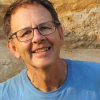How Humans Came to Construct Their Worlds
Michael Arbib, University of California, San Diego
Ricarda Braun, Free University of Berlin
Access to the live webcast for this symposium will be provided here on Friday, October 11 starting at 1:00 PM (Pacific Time).
Summary:
At a global level, Homo sapiens have reshaped the planet Earth to such an extent that we now talk of a new geological age, the Anthropocene. But each of us shapes our own worlds, physically, symbolically, and in the worlds of imagination. This symposium focuses especially on one form of construction, the construction of buildings, while stressing that such construction is ever shaped by diverse factors from landscape to culture and the construction of history embodied in it - and more. After a brief look at birds building their nests as an example of variation on a species-specific Bauplan, we sample a broad sweep of cultural evolution and niche construction from the earliest stone tools of Neanderthals and Homo sapiens through the Neolithic and the rise of cities to the formal and informal architecture of the present day. Finally, we explore the ways artificial intelligence may further change how humans construct their mental and physical worlds.
Learn more about the celebrated design of our venue, the Salk Institute for Biological Studies, itself a marvel of human construction.
| Speakers | Session |
|---|---|
 Susan Healy |
Bird nests: Adaptive variation on innate Bauplans To provide a novel perspective on architecture, the meeting opens with a discussion of the construction of bird nests as a model for human construction (of buildings, drawing and language) – a case for this approach has been offered by (Arbib, Fragaszy, Healy, & Stout, 2023). As distinct from the buildings of termites (interesting though these are), bird nests offer a more apropos point of comparison for human buildings – they are conducted by single vertebrate (or a few) and can be... read more |
 Lawrence Barham |
Combinatorial technology and the emergence of the built environment So-called implicit compositionality assumes that protohumans and humans may come upon a way to construct an object by subtractive construction (as in chipping stones to make tools) and by additive construction (combining pieces to make a useful construct) without a general concept of alternatives. By contrast, explicit compositionality presupposes that humans would have the ability to discuss and evaluate diverse ways to form new constructs. The issue is whether the first emergence of composite... read more |
 Michael Arbib |
Mental and physical construction as co-evolutes in anthropogeny A key to anthropogeny as expressed in both language and architecture is that of construction – both the mental construction of ideas and the physical construction of tools, habitations, and in due course diverse buildings and, in some cases, towns and cities (Arbib, 2012, 2021). The framework for all this is EvoDevoSocio – the idea that biological evolution yields biological mechanisms for both development and adult function of members of a species, but that social interaction is an important... read more |
 Paul Memmott |
Deep time evolution of the indigenous peoples and architectures of Australia This presentation will briefly trace 70000 years of cultural evolution from the ancient crossing from Sunda to Sahul, via the swift continental colonisation during the Ice Age, through the severe impacts on survival during the Last Glacial Maximum, and the socio-territorial reconfigurations during Holocene sea-level rise. The Australian Aboriginal world had become characterised by low environmental impact habitation, complex social organisation systems anchored within constructed sacred... read more |
 Trevor Watkins |
From caves to buildings in southwest Asia Hunting and foraging groups began to use caves as the first base-camps around 500,000 years ago in southwest Asia. From 120,000 years ago, both Homo sapiens and Neanderthals began to bury members of their groups in their base-camps, marking their historical relationship to (and cultural ownership of) repeatedly used places. Burial within the settlement or within the house became in increasingly important feature of the place-making and the making of social memory through the Neolithic period (... read more |
 Ricarda Braun |
Göbekli Tepe The site of Göbekli Tepe is well known as a settlement of the transitional phase in SW-Asia, in which the greater mobility of the Palaeolithic increasingly gave way to the more permanent settlement of the Neolithic. This talk uses the example of Göbekli Tepe to explore the linkage of buildings with ecology, climate, economy, cultural, political, symbolic systems, and creation of networks between dwellings. The central question is to what extent it is possible to understand how people in the... read more |
 Michael Smith |
Camps, villages, towns, and cities: Why did human settlements get bigger and more complex through deep history? As human societies transformed from hunting and gathering to agriculture, and then to urban states and empires, settlements grew larger and more complex. How and why did this happen? Early in the sequence, population growth, cooperation, and the need for defense drove changes in settlements. Once large sedentary sites were established, population growth continued in importance, and the benefits of cities (social interactions and economic productivity) were balanced by their negative effects (... read more |
 Barnabas Calder |
Energy in the Balance Every building – from the Parthenon to the Great Mosque of Damascus to a typical Georgian house – was influenced by the energy available to its architects. This talk offers a historical perspective on a topic of great relevance today, the linkage of architecture and energy (Calder, 2021). It thus provides a useful complement to the non-urban perspective on ecology offered by the talk on “The indigenous architecture of Australia.” Architecture has been shaped in every era by our access to energy... read more |
 Kristine Stiphany |
Favelas, barrios and shantytowns This talk explores the needs of the poor and homeless around the world, charting the interplay between formal and informal settlements (Stiphany & Ward, 2019; Werthmann, 2021). The key example for this talk will be the favelas of Saõ Paulo in the context of a broader concern with Latin American urbanism and the role of individual initiative, social forces and politics as agencies of urban transformation. Built environments are to be seen not only as technological artifacts but also as... read more |
 Mitra Kanaani |
Toward a smart architecture of habitats in the age of human-AI symbiosis in an eco-aware world The mass production of steel and ferroconcrete supported the advent of skyscrapers and their role as symbols of progress and advancement in various parts of the world. This evolutionary trend has continued at an unprecedented pace with industrial and technological discoveries and the consequent cultural transformations in people and their habitats within cities and beyond. The integration of computers, IoT devices, and artificial intelligence (AI) supports the development of intelligent/... read more |
 All Speakers |
Question & Answer Session |
If you enjoy this event, please consider supporting CARTA's quest to explore and explain the human phenomenon.


